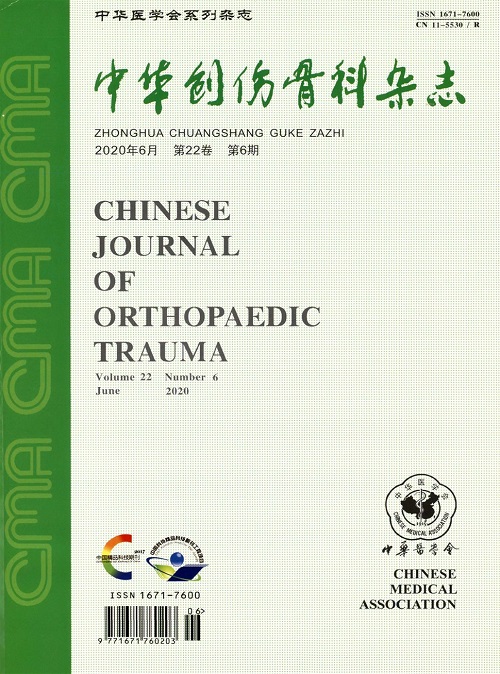Finite element analysis of medial wall fixation of proximal femur
Q4 Medicine
引用次数: 0
Abstract
Objective To explore the significance of proximal femoral medial wall plating by finite element analysis of the stability after medial wall fixation of the proximal femur in all types of 6-part classification of femoral intertrochanteric fractures. Methods Finite element method was used to establish models of 7 types of 6-part classification of femoral intertrochanteric fractures which were fixated with proximal femoral nail anti-rotation (PFNA), medial wall plating (bi-cortex), PFNA+medial wall plating (uni-cortex). The boundary conditions and material properties were defined according to the data published in literature. A load of the peak hip stress was applied in simulation of a normal adult of 70 kg in weight walking. The conditions above produced the Von Mises stress diagrams and Min Principal stress distributions of the normal femur for 21 groups of internal fixation models. The stability of the model was assessed by analyzing the peak stress value of the key part and fragmental displacements in each group. Results In 7 types of fractures fixated with PFNA, the changes in stress and fragmental displacement were small for all major femoral parts while the fragmental displacement increased in the greater trochanter. In the medial wall plating, the stress increased obviously with the increase in bone fragments, especially the lateral ones, for the significant femoral parts and internal fixation, and the fragmental displacements increased greatly but the displacement was always limited for the medial fragments. In the fixation with PFNA+medial wall plating, the stress changes and fragmental displacements for significant femoral parts were the smallest of the 3 fixation methods. Conclusions Proximal femoral plating can effectively reduce stress concentration at the proximal femur and provide better support for the medial wall of the proximal femur. For unstable fractures, PFNA plus medial plating may provide rigid fixation because it better reduces stress on the femur than simple PFNA, does not increase fragmental displacements and leads to no significant abnormal changes in internal fixation structure. Key words: Femur; Fractures, bone; Fracture fixation, internal; Proximal femoral medial wall股骨近端内侧壁固定的有限元分析
目的通过有限元分析股骨近端内侧壁固定后的稳定性,探讨股骨近端内侧壁钢板在所有类型股骨粗隆间骨折6部分分型中的应用意义。方法采用有限元法建立股骨粗隆间骨折7型6部分分型模型,分别采用股骨近端防旋钉(PFNA)、内侧壁钢板(双皮质)、PFNA+内侧壁钢板(单皮质)固定。根据文献资料定义了边界条件和材料性质。应用髋关节峰值应力负荷模拟一个70公斤的正常成人负重行走。在上述条件下,得到21组内固定模型正常股骨的Von Mises应力图和Min Principal应力分布。通过分析各组关键部位的峰值应力值和块体位移来评价模型的稳定性。结果在PFNA固定的7种骨折中,股骨各主要部位的应力和碎片位移变化较小,而股骨大转子的碎片位移增加。在内侧壁钢板中,股骨重要部位和内固定的应力随骨碎片的增加而明显增加,尤其是外侧骨碎片,碎片位移增加较大,但内侧骨碎片位移有限。PFNA+内侧壁钢板固定时,股骨重要部位的应力变化和碎片移位最小。结论股骨近端钢板能有效降低股骨近端应力集中,为股骨近端内侧壁提供较好的支撑。对于不稳定骨折,PFNA +内侧钢板可以提供刚性固定,因为它比单纯PFNA更好地减少股骨应力,不增加碎片移位,并且不会导致内固定结构发生明显异常变化。关键词:股骨;骨折,骨;骨折内固定;股骨内侧壁近端
本文章由计算机程序翻译,如有差异,请以英文原文为准。
求助全文
约1分钟内获得全文
求助全文

 求助内容:
求助内容: 应助结果提醒方式:
应助结果提醒方式:


